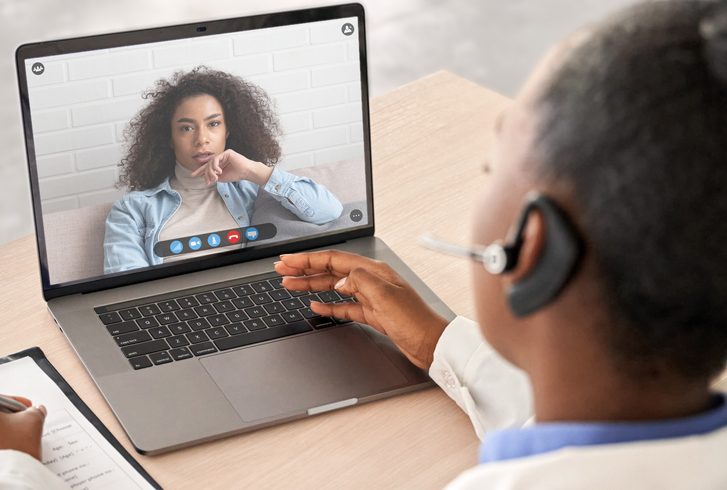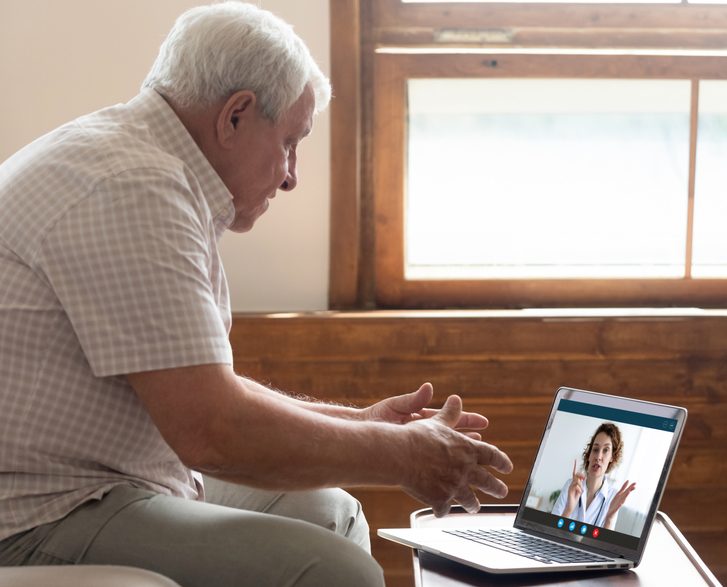
Virtual Therapy is Becoming the New Norm for Counseling—Here’s How You Can Get the Most Out of It

As the coronavirus pandemic continues to affect public health and economies globally, rising amounts of anxiety and distress have taken a toll on a lot of people’s mental health. The need for counseling and therapy sessions are more intense than ever as people get stuck in isolation.
Since the coronavirus-related shutdowns started in mid-March, a lot of therapists and patients have now turned to remote therapy via phones or webcams. What began as a temporary virtual set-up has become a long-term solution.
Although virtual therapy is not the same as the experience of being inside the therapist’s office, the regular remote check-ins are pretty helpful as people try to cope with stress, loneliness, anxiety, and depression due to losing their job, not being able to leave the house, or homeschooling children.
Tribeca Therapy founder Matt Lundquist reveals that he felt surprised yet pleased that almost all of his patients wanted to continue with their virtual therapy throughout the pandemic. He said that body-language gestures, patience, and being able to express your needs could help you get the most out of your virtual therapy session. Aside from that, here are other tips that could get you through virtual counseling.

fizkes/Shutterstock
Therapists are now checking in on their patients remotely and are turning to virtual therapy.
Don’t Be Shy About Speaking Up
Since the therapist and the patient can’t see body language cues of each other through a webcam, it can be a challenge to read each other since body language is used to identify the right time to speak or respond.
To work their way around that, Lundquist and his patients have agreed to use more on-screen hand gestures. The mute and unmute feature in video calls are also helpful, especially for couples and family therapy. Effective results can come out of being patient and giving time for everyone to adjust.
Find a Safe Space
If you have housemates or roommates, you may want to find a quiet space where you can have alone time. Having a safe space is conducive for a productive virtual therapy, according to therapist Linda Snell of New Method Wellness.
Make sure that you can be free with your emotions and feelings in the place that you chose. Snell suggests using your walk-in closet, bedroom, backyard, or balcony. If the privacy is still not enough, sit inside your car or go for a walk alone.

insta_photos/Shutterstock
Do your virtual therapy session in a private space where you feel most comfortable.
Keep it Under the Radar by Saying That You Have a Weekly Meeting
If you don’t want other people you’re isolating with to know that you have therapy sessions, tell them that you will be in a weekly meeting in a set schedule and that some alone time and privacy would be very much appreciated.
Get them into the habit of you having a meeting so they won’t notice if you’re in a virtual therapy session. You can also play white noise or music as your background. For more privacy, hang a “Do Not Disturb” sign on your door.
Discuss What You Feel is Most Important
In the early weeks of stay-at-home orders and when layoffs began, most people wanted to talk about how they can cope with the uncertainty of the situation.
Now that we’re used to the feeling, some people want to go back to the issues that they were tackling before the pandemic. Meanwhile, others still want to discuss pandemic-related concerns. Either way, Lundquist thinks it’s okay. What’s important is that you can communicate your needs to your therapist. You can even switch your topics.

fizkes/Shutterstock
It’s up to you if you want to discuss about your feelings due to the pandemic or you want to touch other topics.
Bring Up Your Concerns to Your Therapist
A considerable number of therapists and patients have moved to the virtual landscape for therapy sessions. However, the less tech-savvy ones may want to rely more on phone calls rather than video calls.
If you find yourself getting troubled over a particular concern during the session, Lundquist says that you shouldn’t be afraid to bring it up to your therapist. After all, it’s your therapy. After you inform them of the problem, try to suggest a possible way to address it that would make things easier and more comfortable for you.
More in Mind & Mental
-
`
Signs of Emotional Connection in Relationships
Building a strong connection with someone isn’t just about being in sync or sharing hobbies—it’s about that deeper bond, where you...
December 4, 2023 -
`
Hollywood’s Shortest Marriages: Britney Spears, Carmen Electra & More!
In the glitzy world of Hollywood, where fairy tales often unfold on the silver screen, there exists a flip side—a realm...
December 3, 2023 -
`
The Surprising Benefits of Unplugging
In today’s hyper-connected world, where we are constantly bombarded with notifications, messages, and the allure of social media, disconnecting may seem...
November 26, 2023 -
`
How “Looking Your Best” Improves Our Wellbeing
Most of us have had moments standing in front of our closet, deciding on an outfit for the day. And we...
November 15, 2023 -
`
Therapy? Medication? What Are the Treatments for PTSD
Post-Traumatic Stress Disorder (PTSD) is a common after-effect of traumatic events. It can be a debilitating condition, but the good news...
November 7, 2023 -
`
Meet the Woman Who ALMOST Married Barack Obama
Barack Obama’s life has been a captivating narrative, often told and retold, with each revelation adding layers of intrigue to his...
November 5, 2023 -
`
The Rise of Caviar Bumps, Thanks to Gen Z
In an intriguing twist of culinary culture, millennials and Gen Zers are drawn to an unusual indulgence – fish eggs, or...
October 28, 2023 -
`
Everything You Need to Know About Acid Reflux, Heartburn and GERD
Ever had that burning-in-the-chest sensation after a meal? Or perhaps you have lain awake at night with an odd sour taste...
October 17, 2023 -
`
Best AI Apps for Mental Health
Mental health has long been a topic of discussion and concern. With technological advancements, AI (Artificial Intelligence) has emerged as a...
October 10, 2023















You must be logged in to post a comment Login